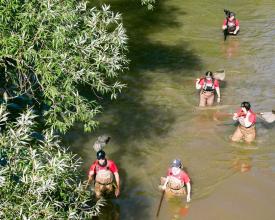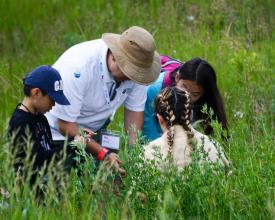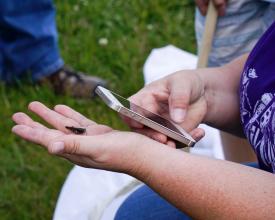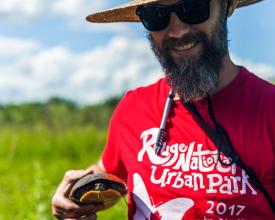
Nationwide citizen science engagement using iNaturalist to document, conserve and connect with biodiversity

In 2017 the Canadian Wildlife Federation (CWF) led a national citizen science initiative, supported by the Canadian government, celebrating 150 years of Confederation. This engaged thousands of people in a participatory exploration of biodiversity. A Bioblitz is a race against the clock that allows the public to engage with species experts to document as many living things as possible in a given area. CWF coordinated 35 bioblitzes including 10 scientific inventories and 5 flagship events across all provinces and territories, while the Parks Canada Agency hosted 22 additional ones. Data was collected using iNaturalist Canada to record verifiable nature observations using a digital camera or the iNaturalist app. The Bioblitz Canada 150 dataset as well as the millions of other observations, are publicly available for conservation and education. As a lasting legacy, CWF has created “bioblitz-in-a-box” which is an online toolkit to carrying out a bioblitz event.
Impacts
Bioblitz Canada catapulted the uptake and use of iNaturalist in Canada. Usage and observations more than tripled in 2017 and the exponential growth has continued since. The iNaturalist Canada database now includes millions of mapped locations of wildlife, which has been incorporated into many scientific publications and conservation actions. Members of iNaturalist Canada have discovered species new to Canada, including the early detection of several invasive species. The 2017 events documented nearly 40,000 observations including 556 observations of species at risk. Across the country nearly 10,000 individuals participated, giving the opportunity to connect with nature in a meaningful way that also contributed to conservation. A Virtual BioBlitz project ran in parallel to locally organized events which was the first of this type of engagement, allowing people to participate from across the country, even if there were no events happening in their area. This has paved the way for others, which has been especially pertinent in the time of physical distancing and restricted travel. A toolkit for carrying out various scales of bioblitz has been created and is freely available for others to organize bioblitz events. As the lead on iNaturalist Canada and with continued involvement in bioblitzes, CWF continues to engage the nation beyond Canada 150.






